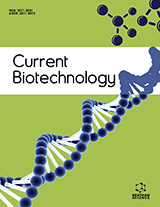Abstract
The development of cancer is associated with alterations to the physiology of the cell caused by multiple changes in its genome. A frequent genomic event in cancer is chromosome translocation, an exchange of large DNA fragments between two non-homologous chromosomes that in many cases leads to the creation of new fusion genes. Chromosome translocations are key events in the initiation or progression of many neoplastic processes. The difficulty in generating specific chromosome translocations in the laboratory has meant that researchers have lacked appropriate cellular models in which to investigate the effect of these key cancer markers. Different genome-engineering strategies used to induce defined chromosome translocations have met with varying success. Recently, the use of the RGEN technology (RNA-guided endonuclease), also known as the CRISPR/Cas9 system, has demonstrated as proof-of-principle that it is possible to engineer cells to undergo these specific chromosomal translocations with high efficiency. Using this advance, it is now possible to easily and accurately generate cell models harboring the same alterations that define tumor cells from patients, allowing researchers to experimentally recapitulate the genomic alterations needed to transform a healthy cell. In this review, we summarize the different methods used to mimic cancer-related chromosomal translocations and highlight the advantages of RGEN technology for improving the generation of models for the study of cancer. These advances will in time lead to the development of better therapeutic approaches to the treatment of cancer.
Keywords: Acute myeloid leukemia, cancer model, chromosome translocation, CRISPR/Cas9, Ewing’s sarcoma, gene editing.
Graphical Abstract
Current Biotechnology
Title:The Use of Innovative Tools to Reproduce Human Cancer Translocations: Lessons from the CRISPR/Cas System
Volume: 3 Issue: 4
Author(s): Raul Torres, Sandra Rodriguez-Perales and Juan C. Ramirez
Affiliation:
Keywords: Acute myeloid leukemia, cancer model, chromosome translocation, CRISPR/Cas9, Ewing’s sarcoma, gene editing.
Abstract: The development of cancer is associated with alterations to the physiology of the cell caused by multiple changes in its genome. A frequent genomic event in cancer is chromosome translocation, an exchange of large DNA fragments between two non-homologous chromosomes that in many cases leads to the creation of new fusion genes. Chromosome translocations are key events in the initiation or progression of many neoplastic processes. The difficulty in generating specific chromosome translocations in the laboratory has meant that researchers have lacked appropriate cellular models in which to investigate the effect of these key cancer markers. Different genome-engineering strategies used to induce defined chromosome translocations have met with varying success. Recently, the use of the RGEN technology (RNA-guided endonuclease), also known as the CRISPR/Cas9 system, has demonstrated as proof-of-principle that it is possible to engineer cells to undergo these specific chromosomal translocations with high efficiency. Using this advance, it is now possible to easily and accurately generate cell models harboring the same alterations that define tumor cells from patients, allowing researchers to experimentally recapitulate the genomic alterations needed to transform a healthy cell. In this review, we summarize the different methods used to mimic cancer-related chromosomal translocations and highlight the advantages of RGEN technology for improving the generation of models for the study of cancer. These advances will in time lead to the development of better therapeutic approaches to the treatment of cancer.
Export Options
About this article
Cite this article as:
Torres Raul, Rodriguez-Perales Sandra and Ramirez C. Juan, The Use of Innovative Tools to Reproduce Human Cancer Translocations: Lessons from the CRISPR/Cas System, Current Biotechnology 2014; 3 (4) . https://dx.doi.org/10.2174/2211550103666141023221106
| DOI https://dx.doi.org/10.2174/2211550103666141023221106 |
Print ISSN 2211-5501 |
| Publisher Name Bentham Science Publisher |
Online ISSN 2211-551X |
 33
33
- Author Guidelines
- Bentham Author Support Services (BASS)
- Graphical Abstracts
- Fabricating and Stating False Information
- Research Misconduct
- Post Publication Discussions and Corrections
- Publishing Ethics and Rectitude
- Increase Visibility of Your Article
- Archiving Policies
- Peer Review Workflow
- Order Your Article Before Print
- Promote Your Article
- Manuscript Transfer Facility
- Editorial Policies
- Allegations from Whistleblowers
- Announcements
Related Articles
-
Advances in the Management of Malignant Hemopathies: The Role of Statins
Recent Patents on DNA & Gene Sequences Effects of Anticancer Drugs in Reproductive Parameters of Juvenile Male Animals and Role of Protective Agents
Anti-Cancer Agents in Medicinal Chemistry Second Generation Proteasome Inhibitors: Carfilzomib and Immunoproteasome-Specific Inhibitors (IPSIs)
Current Cancer Drug Targets Allosteric Targeting of Aurora A Kinase Using Small Molecules: A Step Forward Towards Next Generation Medicines?
Current Medicinal Chemistry ChemoImmunoModulation: Immune Regulation by the Antineoplastic Chemotherapeutic Agents
Current Medicinal Chemistry New Directions in Targeting Protein Kinases: Focusing Upon True Allosteric and Bivalent Inhibitors
Current Pharmaceutical Design MYC-mediated Synthetic Lethality for Treatment of Hematological Malignancies
Current Cancer Drug Targets Mechanisms for Targeted Delivery of Nanoparticles in Cancer
Current Pharmaceutical Design The Dual Role of Tumor Necrosis Factor (TNF) in Cancer Biology
Current Medicinal Chemistry Kavalactone Pharmacophores for Major Cellular Drug Targets
Mini-Reviews in Medicinal Chemistry The Functions of Polo-Like Kinases and their Relevance to Human Disease
Current Medicinal Chemistry - Immunology, Endocrine & Metabolic Agents Recent Clinical Trials of Cladribine in Hematological Malignancies and Autoimmune Disorders
Reviews on Recent Clinical Trials Epigenetic Regulation of ABCB1 Transporter Expression and Function
Current Pharmacogenomics and Personalized Medicine Pathophysiological and Clinical Aspects of Iron Chelation Therapy in MDS
Current Pharmaceutical Design Targeting Sphingosine-1-Phosphate in Hematologic Malignancies
Anti-Cancer Agents in Medicinal Chemistry Novel Inhibitors of Inosine Monophosphate Dehydrogenase in Patent Literature of the Last Decade
Recent Patents on Anti-Cancer Drug Discovery Understanding Autophagy in Cell Death Control
Current Pharmaceutical Design Regulation of Cytokine Production by γδ T Cells
Current Medicinal Chemistry - Anti-Inflammatory & Anti-Allergy Agents Engineered Nanoparticles Against MDR in Cancer: The State of the Art and its Prospective
Current Pharmaceutical Design Recent Advances and Developments in Treatment Strategies Against Pancreatic Cancer
Current Clinical Pharmacology























